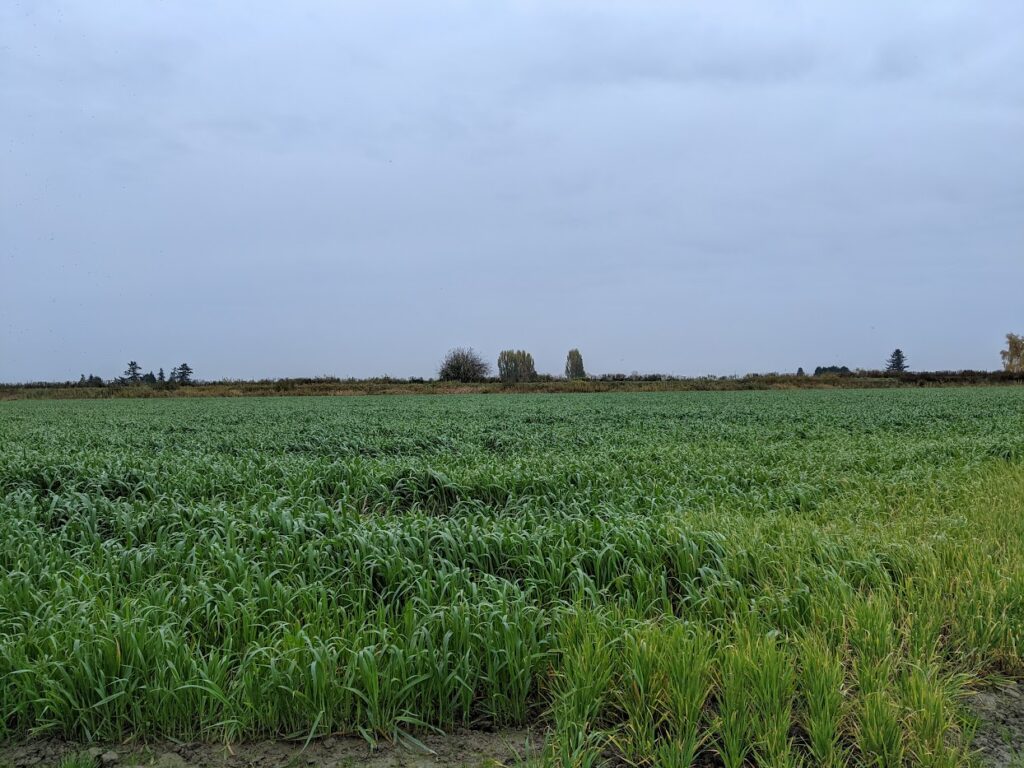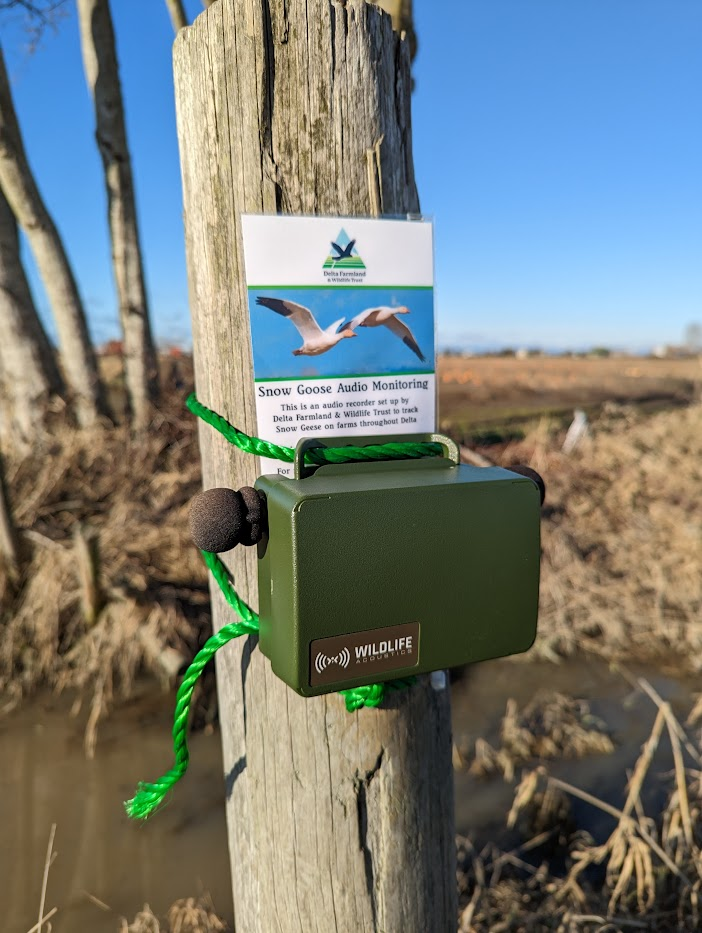From autumn to spring every year, Snow Geese fill the skies with their calls as they migrate to the Fraser River delta for wintering habitat. In Delta and Richmond, they find opportunities to forage on foreshore marshland, forage fields and fields planted with winter cover crops such as oats or rye.

Throughout the winter, we monitor waterfowl impacts on cover crop fields and survey throughout Delta to see where Snow Geese and other waterfowl are grazing. Unfortunately we can’t be everywhere looking for Snow Geese at once and farmers have been observing for years that geese are more commonly coming onto fields at night, leaving the fields empty during the day.
To fill in the gaps in monitoring, this autumn we set up a test network of 12 audio recorders in Delta and Richmond. These autonomous recording units’ or “ARUs” are able to record audio with about the same range as we are able to hear, but can record for 24 hours a day.

Pairing the recordings made by the ARUs with software that can automatically identify bird calls and some human verification of the audio will allow us to quickly process the data to tell us where Snow Geese are and when.

This is an ongoing trial project and early results are promising that the ARU system works to accurately record and detect Snow Geese. With the recorders running 24 hours a day, we’re been able to confirm a fairly high amount of waterfowl activity at night.
In recordings in the middle of the night, we’re able to hear flocks of Snow Geese calling from overhead and landing onto fields, Bald Eagles screeching and Mallards and Wigeon tirelessly grazing.
As we continue to process the recordings and as the season progresses, we will continue to post project updates here!
Connor Hawey, DFWT Field and Research Technician
